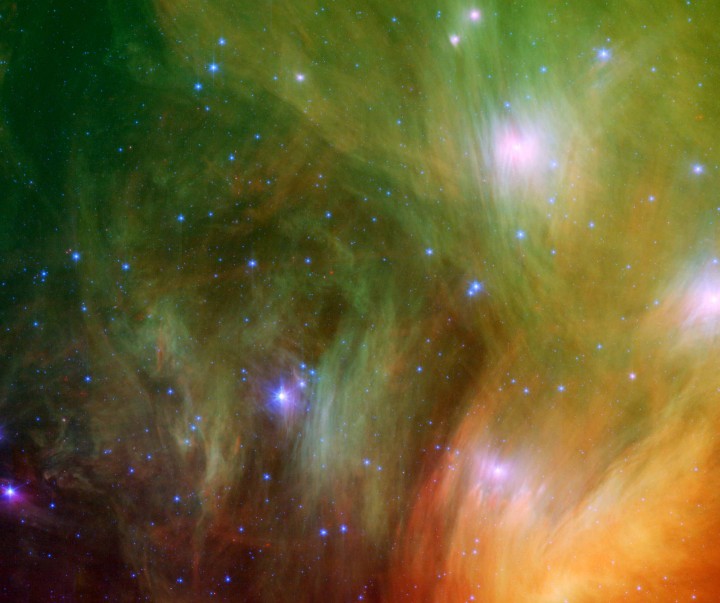Explanation: Hurtling through a cosmic dust cloud a mere 400 light-years away, the lovely Pleiades or Seven Sisters star cluster is well-known in astronomical images for its striking blue reflection nebulae. At visible wavelengths, the starlight is scattered and reflected by the dust, but in this portrait in infrared light by the Spitzer Space Telescope, the dust itself glows. The false color image spans about 1 degree or seven light-years at the distance of the Pleiades, with the densest regions of the dust cloud shown in yellow and red hues. Exploring this young nearby cluster, the Spitzer data have revealed many cool low mass stars, brown dwarfs or failed stars, and possible planetary debris disks. Want to see the Pleiades tonight? Look near Venus, the brilliant evening star in the west just after sunset.
1999 2000 2001 2002 2003 2004 2005 2006 2007 2008 2009 2010 2011 2012 2013 2014 2015 2016 2017 2018 2019 2020 2021 2022 2023 2024 2025 |
Yanvar' Fevral' Mart Aprel' Mai Iyun' Iyul' Avgust Sentyabr' Oktyabr' Noyabr' Dekabr' |
NASA Web Site Statements, Warnings, and Disclaimers
NASA Official: Jay Norris. Specific rights apply.
A service of: LHEA at NASA / GSFC
& Michigan Tech. U.
|
Publikacii s klyuchevymi slovami:
pleiades - dust - open cluster - infrared - Pleyady - pylevoe oblako - Rasseyannoe skoplenie
Publikacii so slovami: pleiades - dust - open cluster - infrared - Pleyady - pylevoe oblako - Rasseyannoe skoplenie | |
Sm. takzhe:
Vse publikacii na tu zhe temu >> | |
